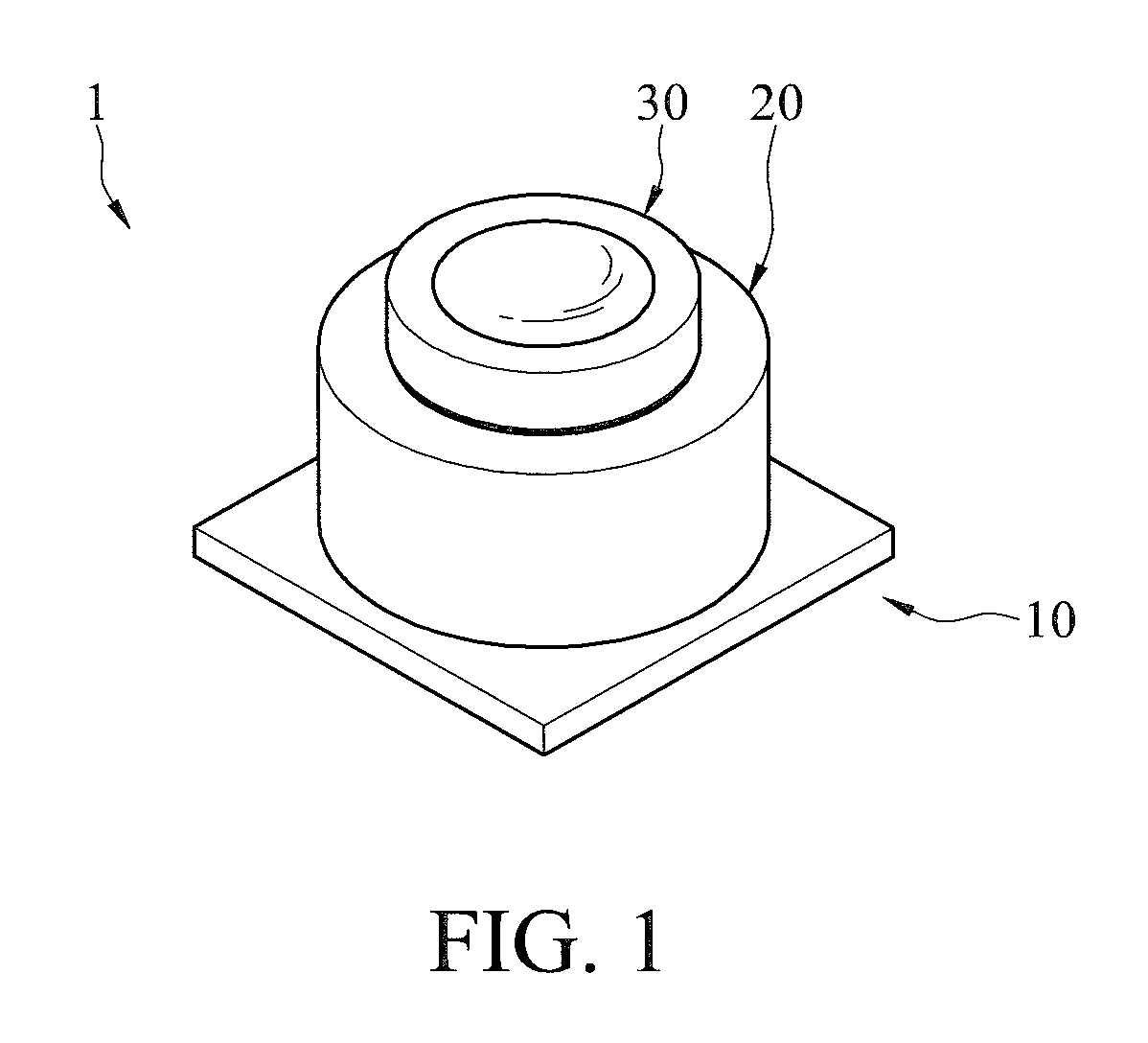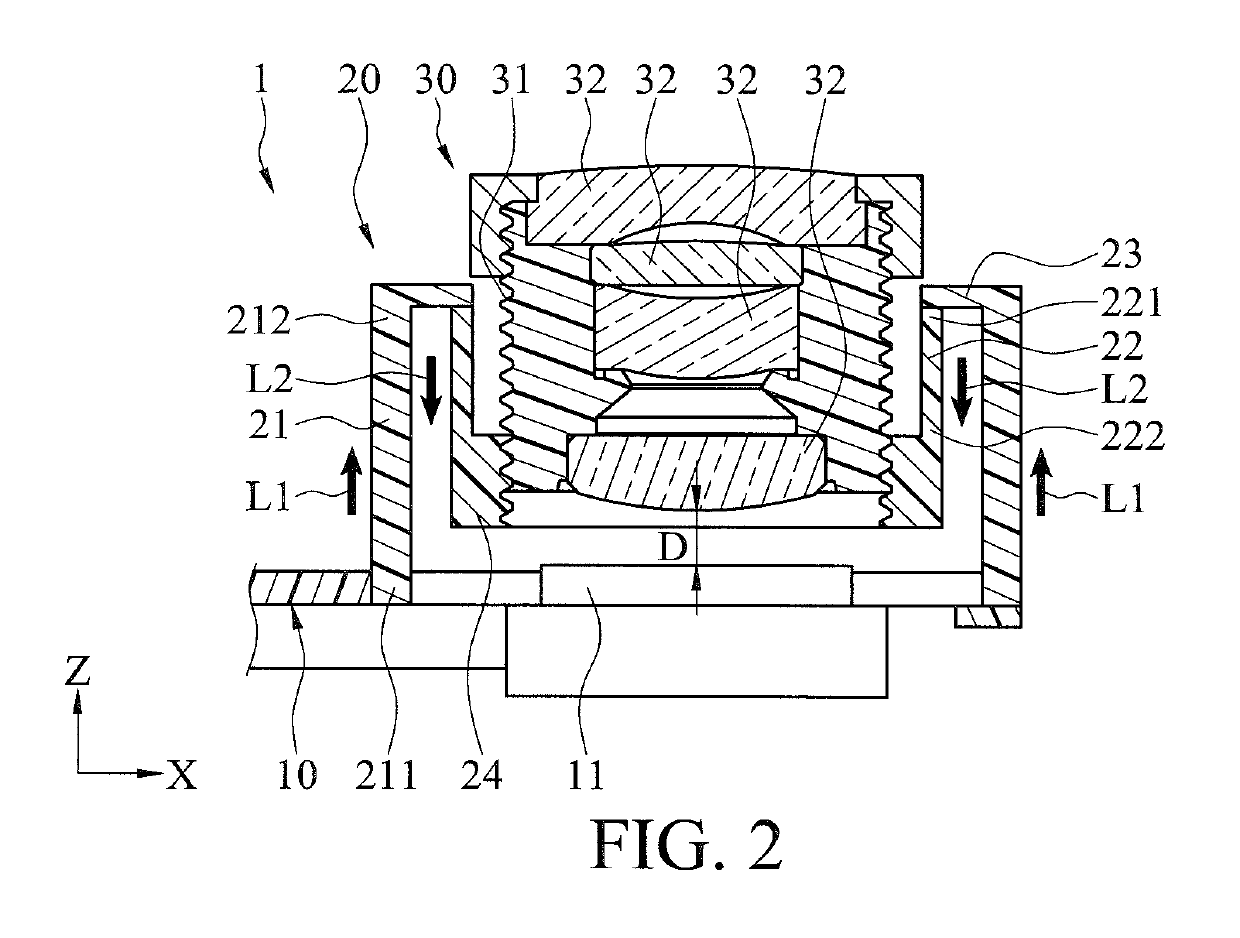Camera capable of automatically compensating focal length
a technology of automatic compensating and focal length, applied in the field of cameras, can solve the problems that the focus position of the camera known to the inventor may easily have unwanted movements, and achieve the effect of keeping the quality of the imag
- Summary
- Abstract
- Description
- Claims
- Application Information
AI Technical Summary
Benefits of technology
Problems solved by technology
Method used
Image
Examples
second embodiment
[0023]In some embodiments, the connecting member 23 of the camera 1 may have different configurations. For example, FIG. 3 illustrates an exploded view of a camera 1 according to the instant disclosure. In this embodiment, the connecting member 23A is an individual component and fixed on an end surface of the second end 212 of the first ring 21 and on an end surface of the third end 221 of the second ring 22. Since the connecting member 23A is fixed on the end surface of the second ring 22 and the end surface of the first ring 21, the horizontal thermal deformation of the first ring 21 and the horizontal thermal deformation of the second ring 22 do not affect with each other to generate errors for the assembly. Furthermore, in this embodiment, the connecting member 23A has two grooves 231. During the assembly, the second end 212 of the first ring 21 and the third end 221 of the second ring 22 are respectively inserted into the two grooves 231. Hence, during the assembly of the camer...
third embodiment
[0024]Alternatively, as shown in FIG. 4, FIG. 4 illustrates an exploded view of a camera 1 according to the instant disclosure. In this embodiment, the connecting member 23B is integrally formed with the second ring 22 and extending from the third end 221 of the second ring 22 in a radial direction. Moreover, in this embodiment, the connecting member 23B has one groove 231. The groove 231 is at an end portion of the connecting member 23B, so that the connecting member 23B has a stepped surface. A protruding block 213 is protruding from an end surface of the second end 212 of the first ring 21, so that the end surface of the second end 212 is a stepped surface. The protruding block 213 is inserted into the groove 231, so that the contact area between the connecting member 23B and the first ring 21 can be increased and the structural strength of the assembly can be improved. In other embodiments, the connecting member 23B may be integrally formed with the first ring 21 and extending f...
fourth embodiment
[0025]In a further option, as shown in FIG. 5, FIG. 5 illustrates an exploded view of a camera 1 according to the instant disclosure. In this embodiment, the connecting member 23C is a tubular body and sandwiched between the first ring 21 and the second ring 22, so that a distance can be kept between the first ring 21 and the second ring 22. Furthermore, the connecting member 23C is preferably adjacent to the second end 212 of the first ring 21 and the third end 221 of the second ring 22.
[0026]As shown in FIG. 6, FIG. 6 illustrates an exploded view of a camera 2 according to a fifth embodiment of the instant disclosure. In this embodiment, the first coupling part 24′ is different from that in the first embodiment. In this embodiment, the first coupling part 24′ comprises a third ring 25 and a radial connecting member 26. The third ring 25 comprises a fifth end 251 and a sixth end 252 that are axially opposite to each other. The fifth end 251 of the third ring 25 is connected to the ...
PUM
 Login to View More
Login to View More Abstract
Description
Claims
Application Information
 Login to View More
Login to View More - R&D
- Intellectual Property
- Life Sciences
- Materials
- Tech Scout
- Unparalleled Data Quality
- Higher Quality Content
- 60% Fewer Hallucinations
Browse by: Latest US Patents, China's latest patents, Technical Efficacy Thesaurus, Application Domain, Technology Topic, Popular Technical Reports.
© 2025 PatSnap. All rights reserved.Legal|Privacy policy|Modern Slavery Act Transparency Statement|Sitemap|About US| Contact US: help@patsnap.com



